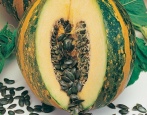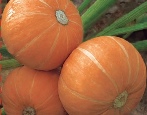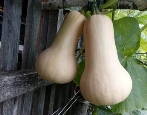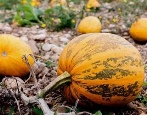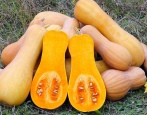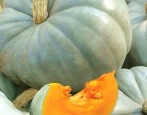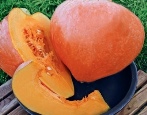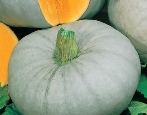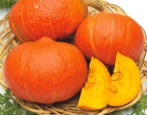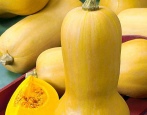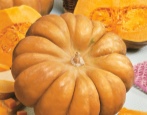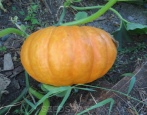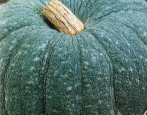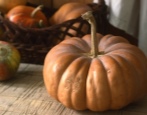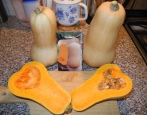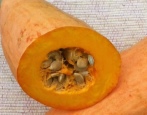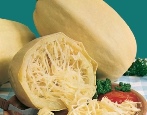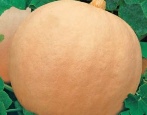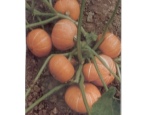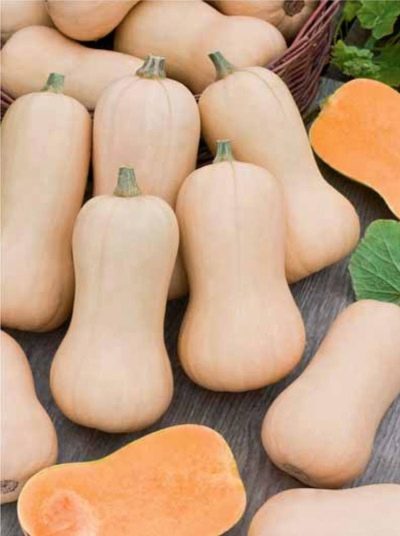
- Authors: German selection
- Growth type: powerful
- The form: pear-shaped
- Weight, kg: up to 4
- Coloration: cream
- Bark: thin
- Color of the pulp: bright orange
- Pulp (consistency): dense and crispy
- Taste: very sweet
- Taste qualities: excellent
Pumpkin forms several subspecies, each of which has its own unique qualities: high decorativeness, large size, excellent taste, shelf life or yield.
Breeding history
The variety Peanut butter belongs to nutmeg pumpkins - the most delicious and healthy variety of the family in terms of vitamin composition. The slight aroma of nutmeg from the pulp is the reason for the name of the species. These pumpkins have spread all over the world from the countries of Central America.
The pioneer cultivar of modern Butternut squash was developed in 1944 in the United States by Charles Leggett by crossing Hubbard and Gooseneck squash.
Since then, breeders from different countries have been creating their own versions of the famous butternut pumpkin. It is believed that the variety known in Russia as Peanut Butter is the result of the work of German specialists. Today it is recognized as one of the best in the category of nutmeg and is grown practically throughout the entire territory of the Russian Federation.
Description of the variety
Peanut butter is an early ripe variety of nutmeg, pear-shaped pumpkin, resistant to major infections, high-yielding, with good keeping quality, excellent taste and universal application.
Characteristics of the appearance of plants and fruits
Pumpkin plant Peanut butter forms a long, powerful main lash (4-5 m) and several strong lashes of the 2nd and 3rd order with large five-lobed leaves.
Elongated fruits can be pear-shaped or hourglass-like. Pumpkin color changes as it ripens from light green to creamy beige. The weight of the fruits ranges from 1.5 to 4 kg, they reach 40 cm in length, and the average size is 25-30 cm.
The skin of a ripe pumpkin is thin, the aromatic flesh is distinguished by a bright uniform orange color. The structure of the pulp is dense, homogeneous, without fibers, buttery. The seed chamber is small, located in the thickened part of the fruit.
Purpose and taste
This pumpkin is famous for its pleasant, slightly nutty taste with a lot of sugars, so it is popular with adults and children. The beneficial properties of the product are due to the high levels of carotene content (in carrots it is 2-3 times less), vegetable fats, vitamins and microelements. Such a pumpkin becomes an element of dietary and medical nutrition, helps to strengthen the immune system, and removes toxins.
The sweetness and pleasant crunchy texture allows you to use Peanut Butter fresh: as a separate product or in salads. Juice can be made from this pumpkin. The variety is also suitable for various types of culinary processing: the fruits are stewed, baked, cooked cereals and puree soup, make healthy candied fruits.
Ripening terms
The variety Peanut butter, like all heat-loving nutmeg pumpkins, is distinguished by its early maturity, therefore it manages to ripen before the onset of the autumn cold.
A little less than 4 months (105-112 days) pass from the first mass shoots to harvest. From the moment of planting seedlings to ripening of fruits - 60-70 days. Pumpkins are harvested from late August to late September.
Yield
The variety bears fruit abundantly: the plant produces from 15 to 30 pumpkins.When the stalk dries up and the bark of the fruit turns beige-yellow and hardens, the pumpkin can be removed from the whip.
The crop must be cut off with a clean knife or garden pruner, leaving each vegetable with a small tail about 6 cm long - this will keep the pumpkin longer. In a properly organized storage area, the crop can lie without spoilage and deterioration in taste for 4-6 months.
Growing and caring
Seeds are sown in open ground in the southern regions, buried by 3-5 cm. Seedlings are culled, removing weak shoots. For the middle zone of the Russian Federation, cultivation through seedlings is suitable. Seeds are sown in containers in April, and in May-June, the seedlings are transferred to the site. Each plant is allocated a fairly large space, placing seedlings according to the scheme 80x80 cm or even 100x100 cm.
Care is simple: weeding, loosening the soil, infrequent watering, the introduction of organic matter and mineral complex additives.
Requirements for soil and climatic conditions
The variety prefers sunny areas with fertile, structural black earth, sandy loam, light loamy soil. Sour, constantly damp soils with a predominance of clay are not suitable for growing pumpkin. Seeds or seedlings are planted only in well-heated soil.
The accumulation of sugar content in pumpkin is facilitated by warm or even hot summers. In regions with short, cool and humid summer seasons, this sunny vegetable can be grown in greenhouses.
Disease and pest resistance
The variety is highly immune to a number of diseases and is rarely affected by rot. Slugs and snails are considered dangerous pests. "Barriers" of dry mustard, sawdust, ash, sharp gravel or granules of special chemicals will help prevent them from reaching the garden.
